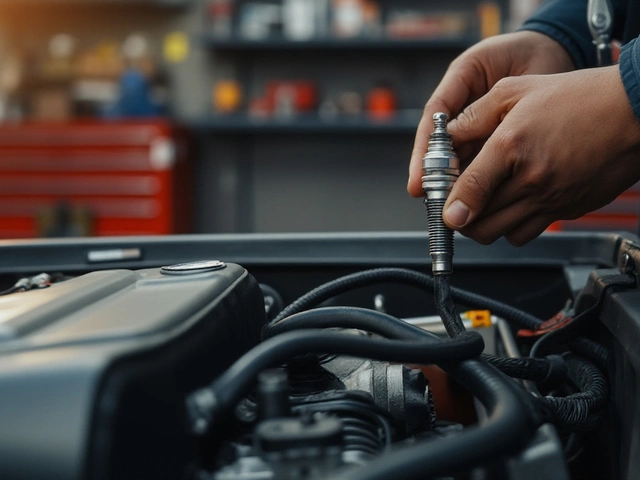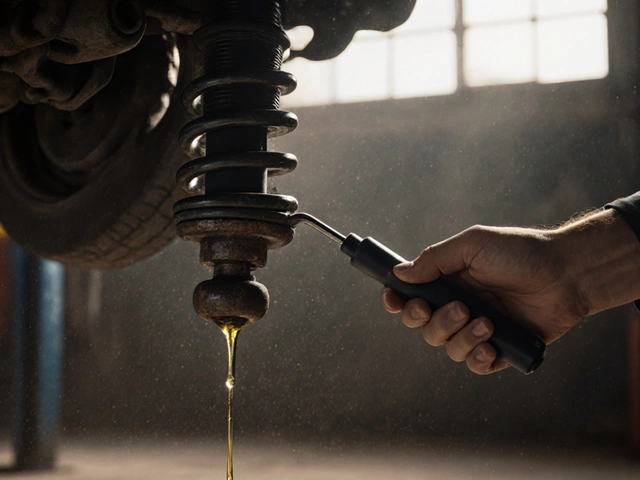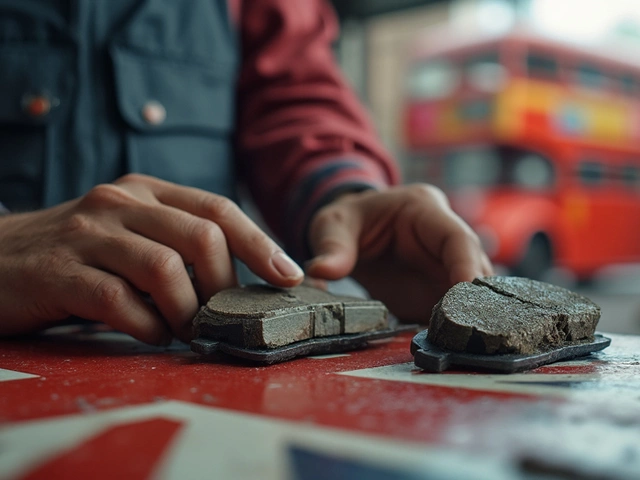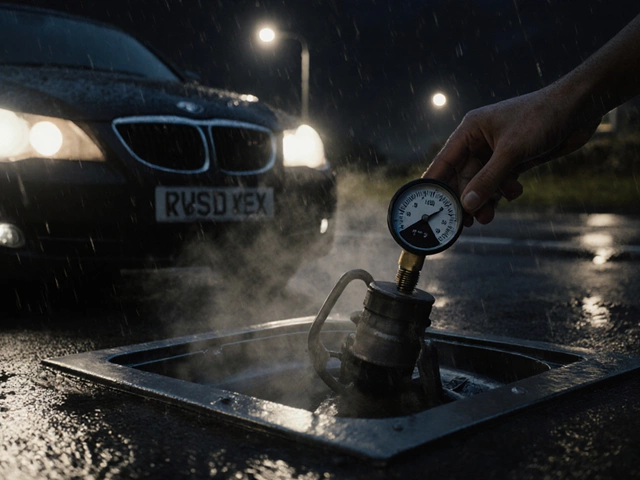So you’ve just swapped out your car's suspension, and you’re ready to hit the road. But hang on a minute, because there's a little more to it than just cruising down the highway. You want to make sure everything’s in top-notch shape, right? Here’s what you should do after replacing the suspension to keep your ride smooth and trouble-free.
First off, it’s crucial to check the suspension alignment. Even if the installation was flawless, minor alignment issues can sneak in and wreak havoc on your tires or steering. So, take your vehicle in for a professional alignment check. It'll save you both money and headaches in the long run.
- Check Suspension Alignment
- Inspect for Leaks and Tightness
- Monitor Vehicle Performance
- Scheduled Maintenance Routine
Check Suspension Alignment
After getting your suspension replacement done, checking the alignment is like putting on a well-fitted glove—it ensures everything feels just right. A proper alignment is key because even the tiniest off-kilter adjustment can lead to uneven tire wear, steering issues, or even reduced fuel efficiency.
Right off the bat, it’s a good idea to head to a trusty mechanic for a professional alignment check. They’ll not only align the wheels but also ensure all angles are set correctly—think of camber, caster, and toe, which might sound fancy, but they just mean the tilt, balance, and parallelism of your wheels.
Here’s a bit of insider info: Some shops use a laser-guided system for pinpoint accuracy, measuring down to fractions of a degree! It’s like having a precision sniper for your vehicle suspension.
Once you’re aligned, keep a tab on how your car is behaving:
- Feel for Drifting: If you notice a pull to the left or right, that’s a red flag.
- Listen for Noises: Sometimes a clunk or rattle can hint at loose parts or misalignment.
- Survey Your Tires: Check for scalloped wear or uneven patches—you don’t want surprises next time you’re driving Rufus around.
Beyond just the technical stuff, a routine check due at every oil change or after hitting a big pothole is a smart move. This ensures your ride stays as smooth as a fresh jar of peanut butter, keeping both you and your car happy.
Inspect for Leaks and Tightness
Alright, let’s get into something super important after you’ve swapped out that suspension. You need to inspect everything for leaks and tightness. This bit might not sound too thrilling, but trust me, you don't want any surprises on the road.
First, pop the hood and take a good look around all the newly installed parts. Check the shocks and struts, looking out for any signs of leakage. It could be a small drip that grows into a big problem, so catch it early. You know how a tiny crack in a phone screen can turn into a spider web? Same idea here.
Next up, make sure everything is snug as a bug. Get under the vehicle (safely, of course – use a proper jack stand!) and feel around those bolts and connections. Nothing should be wobbly or loose. A loose component might affect handling or even cause weird noises when you're driving.
Don’t forget to check those bushings too. They’re the often overlooked heroes of your vehicle’s suspension system. If they’re not sitting right or seem worn out already, you might need to replace them. Bushings make a world of difference by cushioning and spreading out the force, helping your car glide over potholes like a pro.
Here’s a quick checklist:
- Look for oil or fluid leaks around shocks and struts.
- Check torque on bolts and fasteners – are they secure?
- Inspect bushings for wear and tear or improper seating.
If you're ever unsure, don't hesitate to have a mechanic give it a once-over. Otherwise, catching these things early will ensure that your newly replaced suspension lasts as long as possible.

Monitor Vehicle Performance
Okay, you've replaced the suspension, but how's your vehicle actually handling it? Keeping an eye on your car's performance post-replacement is key. It's like checking in on a friend after a big change—sometimes everything's great, other times, not so much. So, what should you watch out for?
First, pay attention to how it feels when you drive. Is your ride smoother, or are there any new rattles and shakes? A new suspension should improve your car's comfort and handling, but if it doesn’t, something might be off. Check out how it corners; if it's feeling sluggish or too bouncy, you may need further adjustments.
Next, give the brakes a try. If they were working fine before the new suspension and now feel different—maybe a little too soft or jerky—it might be worth another look. Sometimes, issues with brakes might be related to suspension tweaks.
Also, don’t forget to listen. Strange noises can be the first sign that something's not quite right. Clicking, clunking or squeaking noises when driving over bumps can indicate improper installation or faulty parts.
- Steering Behavior: Your steering should feel tighter and more reliable. If it feels loose or heavier, go back for a check-up.
- Fuel Efficiency: If your tank empties faster than usual, it could be related to the new suspension replacement, affecting vehicle dynamics.
Lastly, let’s talk stats. According to a 2023 survey by the Automotive Inspection Group, vehicles with regular post-suspension check-ups reported 25% fewer unexpected repairs. It's really about keeping tabs—your wallet and ride performance will thank you.
Scheduled Maintenance Routine
Keeping up with a routine maintenance schedule is like giving your car a regular health check-up. It's what keeps everything running smoothly and expands the lifespan of your new suspension. So, what should be on this maintenance checklist?
First and foremost, give those shiny parts a once-over around every oil change. You’re already under the hood, so why not take a peek? Check for signs of wear or damage. You'll want to keep an eye out for things like torn bushings, which can lead to bigger headaches down the line.
Next, it's all about those vital parts working together in harmony. Pay special attention to your vehicle’s tire condition and pressures. Worn or improperly inflated tires can impact your vehicle suspension in sneaky ways. Keep them rotated and balanced every 6,000 to 8,000 miles to ensure even wear.
Don’t forget to listen and feel while you drive. Funny noises or a bumpy ride can quickly tell you something’s off. Make note of any issues and get them checked out sooner rather than later.
Sometimes, stats help drive home the point. Did you know that keeping your tires properly inflated can actually improve fuel efficiency by up to 3%? And who doesn't want to save a few bucks at the pump?
- Suspension replacement: Check parts during every oil change
- Tire maintenance: Rotate every 6,000-8,000 miles
- Listen for strange noises when driving
- Keep tires properly inflated for better efficiency
By sticking to a regular schedule, you not only take care of your car but also ensure your wallet doesn’t take ridiculous hits from unforeseen repairs. Plus, a well-maintained suspension ensures you get the most out of every drive. Who wouldn't want a smoother and longer-lasting ride?






